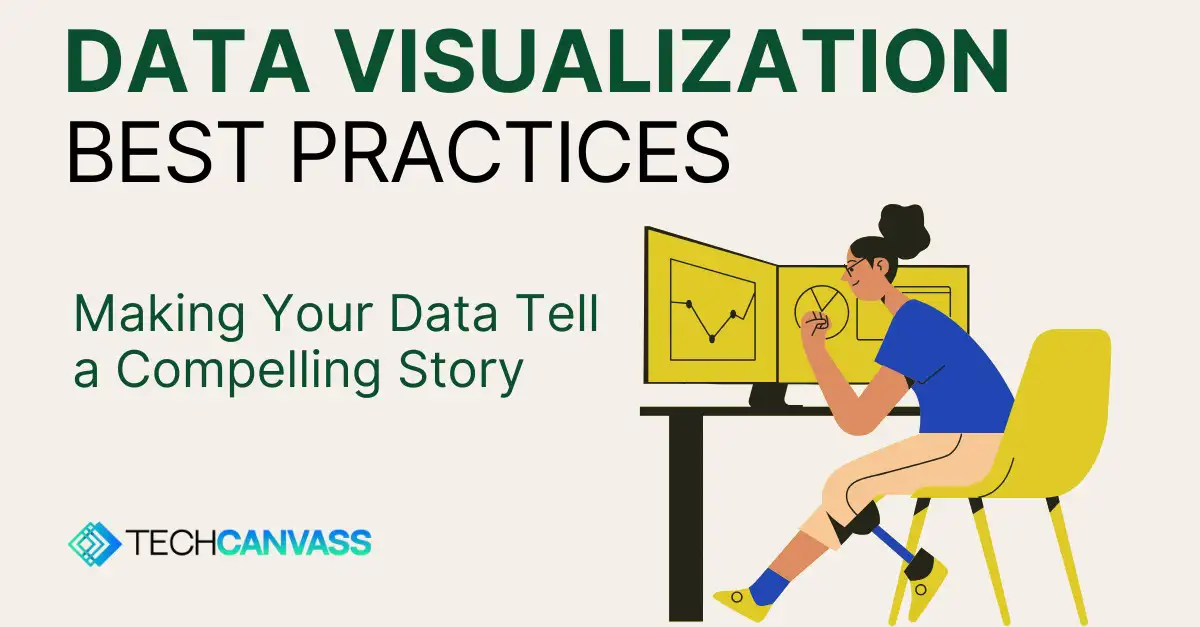Last Updated on January 22, 2025 by Techcanvass Academy
Introduction
There are so many instances in my team where I have stared at a chart and felt completely lost! Has there been any such similar instance with you? If yes, then you’re not alone! Since everybody now have tools to create visualizations, creating visualizations that actually communicate meaning has become more crucial than ever. Hence, many of us struggle to transform our data into clear, engaging visual stories. I have even seen many of my experienced professionals struggling and missing the trick! The worst part is they don’t even know they were wrong! Let’s explore how to make your data visualizations not just beautiful, but truly effective.
Understand and Know Your Audience
Even before you create a single chart, take a minute to think about who will be viewing it. Know what is the goal or purpose of visualization? Who’ll be looking at them? Technical stakeholders or non-technical stakeholders? This is because, you need to tailor the visualization to the individual audience so that they can quickly assess what is happening in the visualization. A room full of data scientists will have different needs than a board of executives. For instance, when presenting to executives, focus on high-level insights with clear business impact. Your CFO might not need to see every data point, but they definitely want to understand how the numbers affect the bottom line. Not to forget their time is vital and they will devote only small amount of time to this meeting.
Consider a recent case where a marketing team created a detailed customer segmentation dashboard. While the data scientists loved the granular details, the marketing directors were overwhelmed. It was too much for them to take in. The solution? Creating two views: one with detailed insights and another with key highlights.
Data Analytics Certification Training | How to Learn Data Analytics with No Programming Background
Choosing the Right Visualization
The goal or the purpose from the above section will drive you to select the correct type of visualization for it. Selecting the appropriate chart type is like choosing the right tool from a toolbox. Each visualization serves a specific purpose. Follow this thumb-rule to understand when to use different types:
- Time Series Data: When showing how metrics change over time, line charts excel at revealing trends and patterns. For example, showing monthly sales figures over a year helps identify seasonal patterns and long-term trends.
- Comparisons: Bar charts work wonderfully for comparing categories. If you want to show sales across different regions then a horizontal bar chart can clearly display this information, especially when you have more than a few categories to compare.
- Part-to-Whole Relationships: While pie charts are popular, they’re most often misused! Only use them when showing proportions that add up to 100%. For instance, market share analysis or budget allocation visualization works well with pie charts, but limit them to no more than five or six segments.
Color Psychology in Data Visualization
Color isn’t just about making your visualizations pretty. It’s a powerful tool for communication. Red might signal danger or loss, while green often represents growth or success. However, remember that about 8% of males have some form of color blindness. Using color combinations that are accessible to everyone is crucial.
Consider using sequential color schemes when showing values from low to high, like in a heat map of sales performance. For contrasting categories, use distinct colors that are easily distinguishable. Remember, less is often more. Many from your audience may not be able to understand different color shades or may even have difficulty in recognizing colors. Using too many colors can make your visualization confusing and hard to interpret.
Practice Simplification
One of the most common errors I encountered in data visualization is trying to show too much at once. Note that every element from your visualization should serve a purpose. Remove gridlines if they don’t add value. Eliminate unnecessary decimals in numbers. Keep it simple. Ask yourself: “Does this chart help convey the message?” If not, it’s probably better to remove it. I can relate this often. Once we reduced our quarterly report dashboard from 15 metrics to just 5 key performance indicators. The result? It helped stakeholders with better understanding and faster decision-making among them.
Interactive Elements and User Experience
Gone are the days of having static visualizations, Now they aren’t always enough. Interactive elements can transform a passive viewing experience into an engaging exploration. However, interactivity should have purpose. Adding hover effects to show detailed information, filters to focus on specific data segments, and drill-down capabilities to explore deeper insights can significantly enhance user understanding.
For example, a retail dashboard might start with high-level sales figures but allow users to click through to see store-level performance, inventory details, and customer metrics. This layered approach keeps the initial view clean while providing depth when needed.
Common Mistakes to Avoid
Learning from your mistakes is valuable but only a genius learns from someone else’s mistakes! These are some of the common mistakes made during visualization:
- Misleading Scales: When reading charts, most people assume that the labeling starts at Zero. Starting your y-axis at a non-zero point can exaggerate differences. Be transparent with your scales.
- Overcomplication: Just because you can create a complex 3D visualization doesn’t mean you should. Simple often works better.
- Poor Context: Numbers without context are just numbers. Always provide relevant comparisons or benchmarks.
- You want to use text and labels to clarify and not clutter the data! Use two or three words at most and let your charts do the talking.
- Don’t use technical terms or jargon to communicate with general audience, they won’t know what it means.
Data Analytics Certification Training | How to Learn Data Analytics with No Programming Background
Accessibility and Inclusivity
Creating accessible visualizations isn’t just good practice – it’s essential. Consider these aspects:
Text size and contrast should be sufficient for easy reading. Color combinations should work for colorblind viewers. Include alternative text descriptions for screen readers.
One of the easiest and clearest ways to communicate a message with visualization is through Headings and Keys. The more compelling the heading, the more attention the reader will pay to the data in the chart or graph.
Testing and Iteration
Your first version is rarely your best. I recommend you share your visualizations with your colleagues and gather feedback from them. Watch how they interact with your dashboards. Do they understand the main message? Can they find important information quickly? And then, Use this feedback to refine and improve your visualizations.
Conclusion
Great data visualization is both an art and a science. It requires understanding your audience, choosing the right charts, using color effectively, and constantly refining your approach. Remember, the goal isn’t to create the most beautiful visualization – it’s to communicate insights effectively and drive understanding.
This is where Techcanvass’s Data Analytics course comes into play. The course will not only help you understand the technical details around visualization tools but it helps you develop the critical thinking needed to create impactful visuals. You’ll learn how to apply these visualization best practices using the hands-on projects and case studies. Click here to know more: Data Analytics Certification Training | Online Courses & Training.



